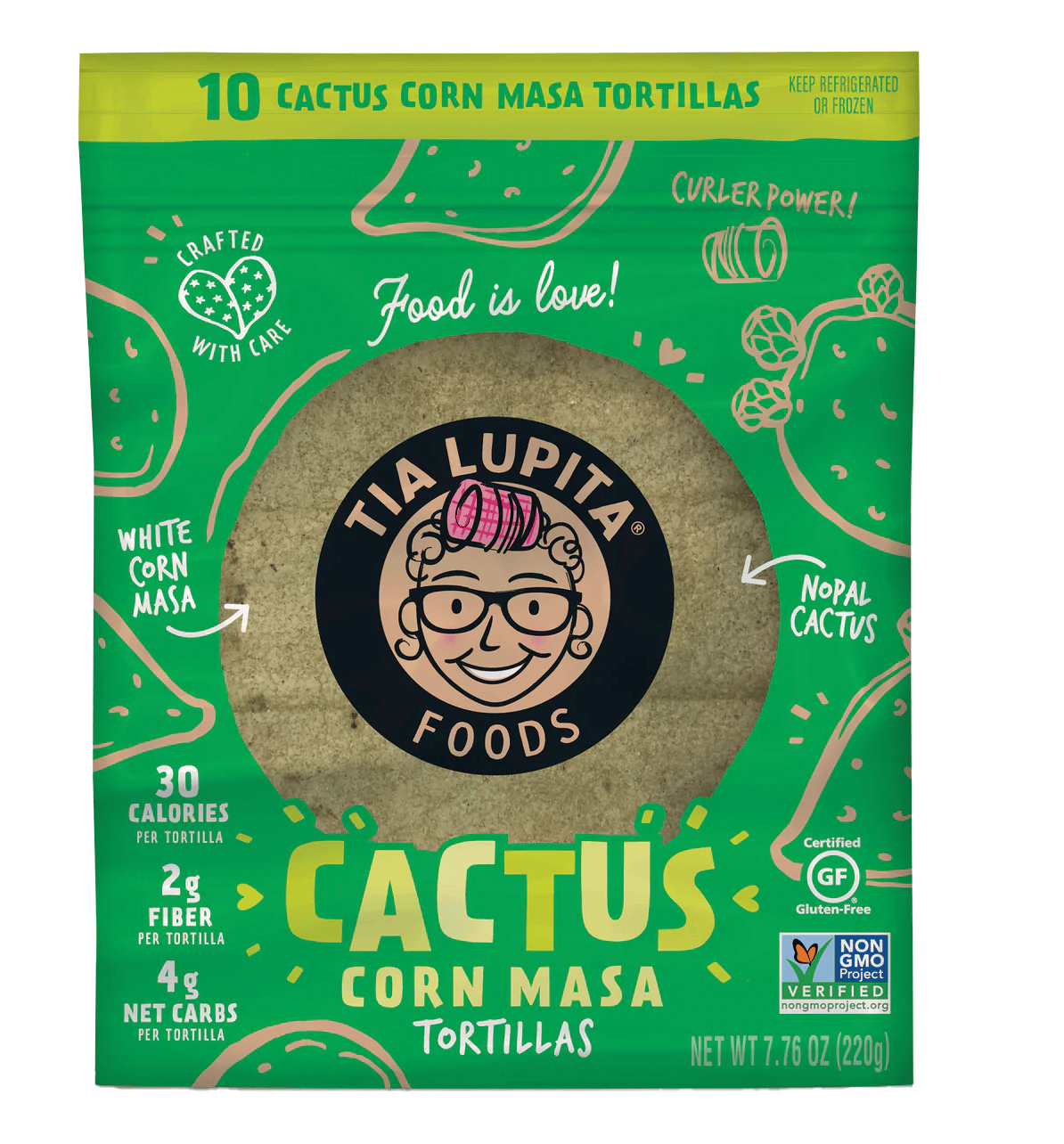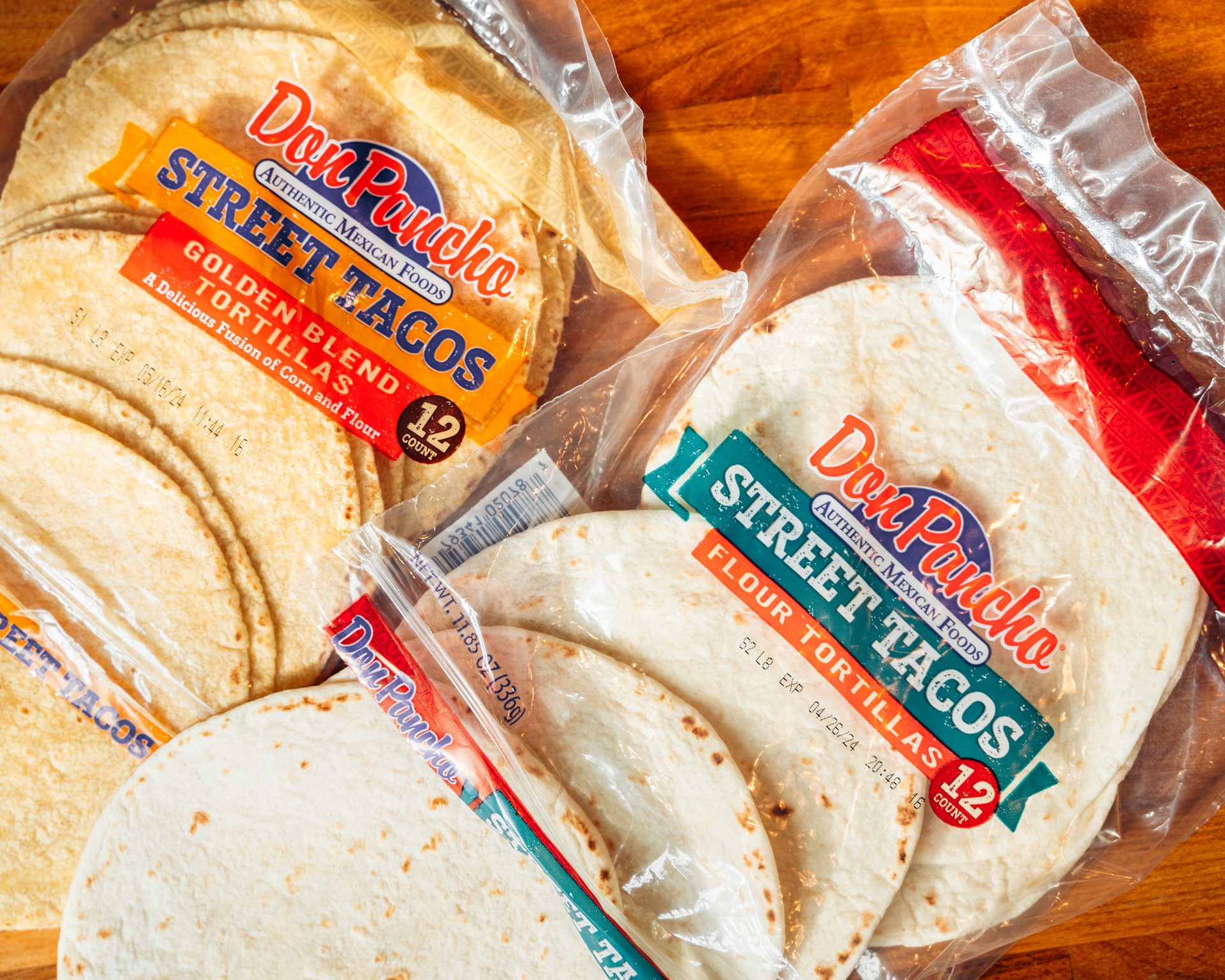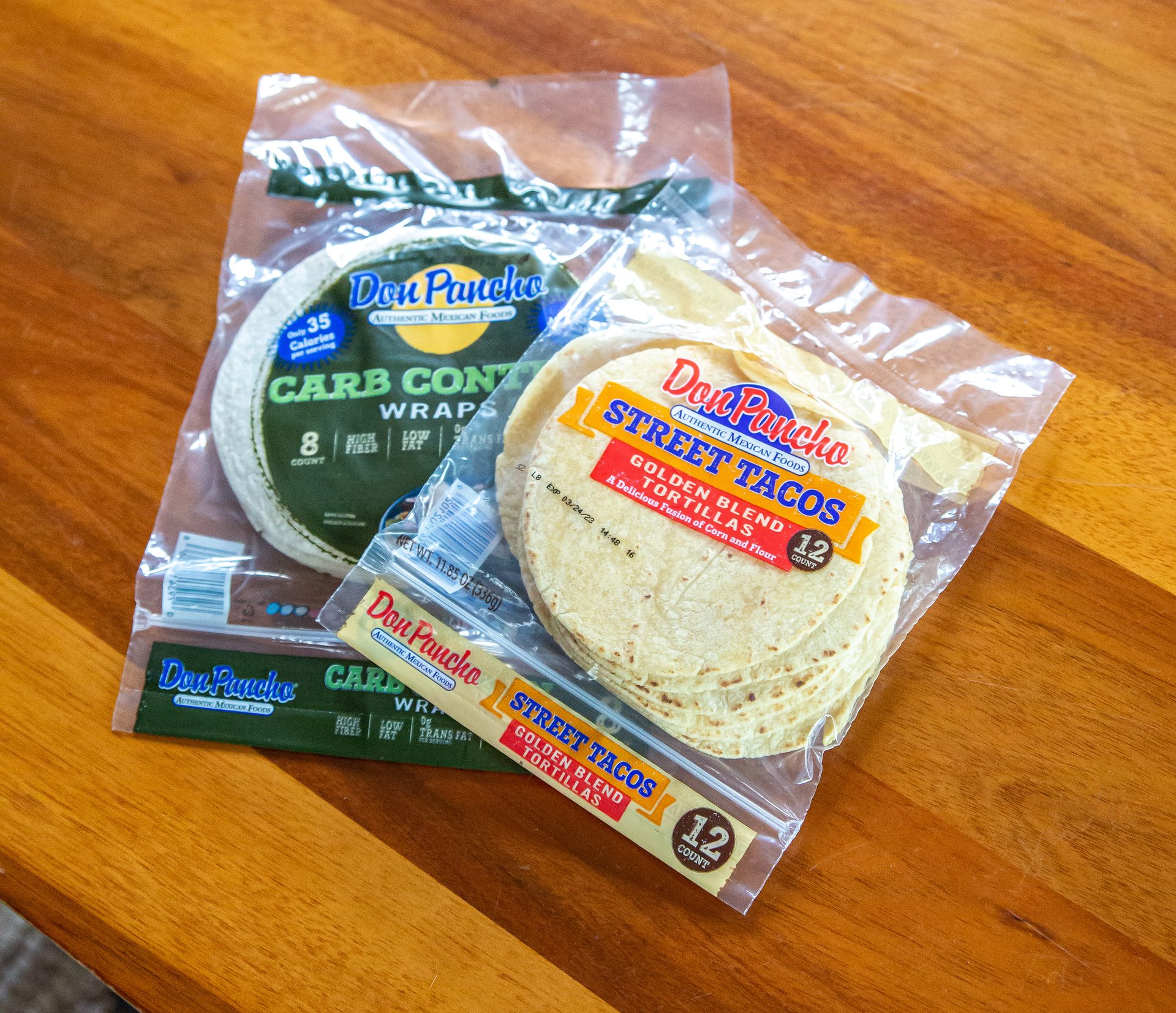The BOTTOM LINE
- A taste for Mexican foods is fueling continued interest in tortillas
- Interest in better-for-you iterations is increasing
- Producers are getting creative with tortilla ingredients
That’s a wrap
As is the case with many bakery products, better-for-you is a leading subcategory.
Ed Finkel, contributing writer
The tortilla category has seen sales fall at U.S. retail outlets but rise in the broader context of foodservice, institutional outlets and other platforms, according to competing sets of data.
TORTILLAS
STATE of the INDUSTRY
Market data
The overall center store wraps/flatbreads category saw sales fall 3.6% to $292.2 million for the 52 weeks ending April 21, according to multioutlet retail data from Circana (Chicago).
The center store wraps subcategory fell 8.6% to just under $92 million in sales. Mission brand producer Gruma S A dominated with $50.9 million in sales, down 4.1%. Other leading companies included Tumaros Inc., $14.6 million, down 30.0%; and Toufayan Bakers Inc., $9.5 million, up 4.0%. Private-label center store wraps saw sales rise 4.6% to $12.2 million in the aggregate.
The perimeter tortillas/wraps/flatbreads category enjoyed a slight rise in sales, at 2.1%, to $329.9 million overall. Perimeter tortillas sales fell precipitously, however, down 24.8% to $20.4 million. That subcategory is almost entirely private label, which was down 22.9% to $20.3 million.

HOVER OVER CHART TO SCROLL DOWN
Source: Circana OmniMarket™ Total Store View | Geography : Total US - Multi Outlet w/ C-Store (Grocery, Drug, Mass Market, Convenience, Military and Select Club & Dollar Retailers) | Time : Latest 52 Weeks Ending 04-21-24
Data from the Tortilla Industry Association indicates continued growth, “just shy of double-digit” percentages, says CEO Jim Kabbani, adding that the association “extended our market data to include details on multiple countries overseas and what the market has done. The growth rate has been holding steady. With strong growth you have challenges, and you also have some consolidation.”
Kabbani figures it makes sense that the Circana data, based on barcode-scanned retail items, “would show a slight decline compared to the recent past as life returns to normal and people eat out more versus staying home and cooking [as they did] during the tail end of COVID.” The association’s data also include foodservice, in-store bakeries, small markets and institutional outlets, he says.
Looking back
Growth in the category has come in different ways among the two categories of consumers that the association tracks, Kabbani says. Hispanic consumers who have grown up eating tortillas at home, as part of their culture, tend to prefer more traditional flavors and ingredients, while those who have begun eating tortillas later in life are more adventurous.
“They’re more likely to have demand for tortillas that are different flavors or colors or a combination,” he says of the latter group. “They want the leading edge of formulations, [based on] health trends that have spiked, like low-carb, low-fat, and gluten-free. A lot of people like to look at consumer labeling on products—fewer ingredients rather than greater.”
Mark Haig, director of sales at Don Pancho, agrees that the category continues to grow, with new sales opportunities across all channels. “We continue to see growth in both retail and foodservice channels,” he says. “Accounting for inflation, sales in foodservice are now above pre-COVID levels.”
Jose Carrillo, head of marketing and strategy at Tia Lupita Foods, says he’s seen continued growth both overall and in the natural channel, citing SPINS data that shows an 8% increase in dollar sales with a “slight decline in units. Just like in all other food categories, prices are going up. When prices go up, dollars go up, but units go down.”
Consumers continue to gain interest in “good for you” items featuring claims like low-carb, zero net carbs, and whole grains, which continue to lead the category in growth, Haig says. “Flavor trends are really beginning to shift, as well,” he says. “With foodservice influencing retail, we are seeing new bold flavors emerge—flavors with a bit more spice than previous versions: jalapeño with a bit more heat, [or] srirachas that are quite a bit bolder, as examples.”
The two factors that Carrillo believes has benefited the category are the better-for-you movement and the growing interest in Mexican food. “People tend to gravitate more toward tortillas than bread, especially if they are corn tortillas, or made with alternative flours or other ingredients,” he says. “Taco Tuesdays and things like that drive sales in general for the category because the public starts adopting those types of trends.”


Courtesy of Tia Lupita Foods
Corn tortillas appeal to those who want better-for-you products because they’re lower in calories and sodium, Carrillo adds, as do “the use of alternative flours like chickpea, almond, or casava—or traditional wheat flour but enhanced with spinach, or turmeric, or other better-for-you ingredients. Alternative flours are here to stay.”
Overall, the tortilla sector has been impacted over the past year by some of the general economic forces buffeting other food and beverage categories, Kabbani says. These include “supply chain issues, which have gotten better. Labor issues are still challenging, in terms of the cost and availability,” he says.
Among the most significant challenges the tortilla category has faced is labor and wage compression as the minimum wage is raised across numerous states, Haig says. “Supply chain has really stabilized in the past 18 months, and that is not as big of a challenge as previously,” he says. “We still see a supply chain issue here and there, but this has now become the exception, and not the rule.”
The top challenge that Carrillo sees in the tortilla category is competition. “There’s more and more and more brands entering this space, [alongside] well-established players like Mission, and private label plays a major role,” he says. “Up-and-coming players like Siete [Foods] bring new things to the table and make the category more competitive.”
Since shelf space is not typically elastic, he adds, “You have to find ways to differentiate yourself vs. the competition. Buyers will continue to use the same thresholds and rules. If a product is not rotating fast enough, there’s plenty of other brands that could take your place. Higher competition and the same shelf space translates to less patience from the buyer.”
Tia Lupita has not released in any new products in the past year, Carrillo says, choosing to focus on its two existing, frozen varieties: a grain-free tortilla made with casava flour, and corn masa tortillas made with cactus flavor. “Cactus flour is a very unique and interesting ingredient—a staple ingredient in Mexico but not here in the United States,” he says. “We’re focusing on educating the consumers in that space. We’ve talked about innovation and what’s next for us in that category.”
While casava is a relatively new ingredient for U.S. consumers, it’s more well-known than cactus flour, Carrillo adds. “Cactus flour is higher in fiber and lower in calories than others,” he says. “That requires a lot of education with consumers. Having cactus flour front-and-center on our packaging is interesting for consumers who are adventurous and want to try something new, or who are familiar with the ingredient—but kind of polarizing for a lot of consumers.”

Courtesy of Don Pancho Tortillas
Don Pancho’s most significant releases in the past year have been line extensions of current items, Haig says. “This is in the form of new flavor options as well as sizing and pack-size options. Family packs in retail continue to be a large growth segment for us, and we have released family-pack versions of several existing items,” he says, adding, “Our competition is such high quality and continuously innovative, which means we must continue to be at the top of our game and continuously improve.”
Looking forward
Kabbani remains “very optimistic” about the tortilla sector. “Our category continues to be the fastest-growing sector in the baking industry,” he says. “I would say that the emphasis on the three healthy aspects—low-fat, low-carb, and gluten-free—is going to continue to grow. There will probably be more growth in the area of different flavors than we’ve seen recently,” although it’s “too early to tell” which flavors.
Carrillo is also bullish regarding the category’s future. “Growth in the category is there,” he says. “Consumers are more and more health-conscious. They’re watching what they eat. They are incorporating new and innovative flavors in their daily habits. We are optimistic that we can capture those opportunities that exist out there. We are also mindful of the competition.”
Alternative flours like casava, chickpea, and almond are here to stay and will continue to see plenty of growth, Carrillo predicts. “What will be interesting to see, with all of those additional ingredients, and the ways the brands and manufacturers enhance products to deliver higher protein, higher fiber and attributes like that, [is the dilemma that] the more things you add, the higher the price point,” he says. “At what point do consumers say, ‘All right, this is high enough.’”
Haig agrees with the others’ heady outlook for the category. “Looking at recent history as well as projected growth, the next five years is extremely exciting,” he says. “We are seeing a long runway of growth in all sales channels: retail, foodservice, institutional, and B2B.” Haig adds that wraps will play a particularly important role in this growth across retail and foodservice, traditional and nontraditional outlets. From national chains to small independents, we are seeing wraps featured front and center,” he says.
Challenges that the sector will face probably will be more regional than national, Kabbani predicts. “In some parts of the country, there will be more challenges with finding good workers,” he says. “In other places, it will be stricter environmental regulations. It’s a bit of a patchwork quilt in that regard.”
Haig says his company has experienced persistent challenges related to sourcing new tortilla equipment. “We are still experiencing longer than normal lead times,” he says. “We’ve worked hand-in-hand with equipment manufacturers to mitigate this, but it is still an issue. Our suppliers continue to be outstanding in their support, and we have started to see these lead times come down—but [they] are still longer than pre-2019 time frames.”

Courtesy of Don Pancho Tortillas
“Taco Tuesdays and things like that drive sales in general for the category because the public starts adopting those types of trends.”
— Jose Carrillo, head of marketing and strategy at Tia Lupita Foods





